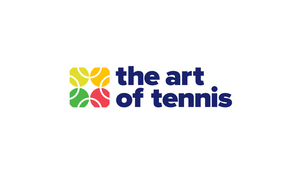A Great but Strange Way to Train Your Volleys…

Generally speaking, it is a good idea to focus on parts of the game that are going to take place in a match. However one of the hardest shots to train is the volleys. Once you have a basic technique with the volleys you need to practice volleys dynamically to replicate what will happen in a match.
Volley Serves
This is why I break the rules of practicing volleys. The normal way is feeding and soft groundstrokes (that go in an gentle upwards direction). However once a young player or new adult player has progressed through the first few stages, I will also train volleys by receiving serve.
5 Benefits of receiving the serve with a volley (in training) are:
1. Variable dip on the ball. A realistic first volley is likely to be low and often dipping. The randomness of the dipping of a serve along with changing where you stand and receive the volley make it is a great, realistic exercise that has that bit of adrenaline to it.
2. Variable spins on the serve is great practice for volleys. Dealing with a swinging slice serve into the body or a kick serve out wide is great to practice moving your body and racquet to the position that works.
3. Train reaction time. Serves can be quick and sometimes too quick for the volleyer depending on the experience of both players. If the volleyer is making less than 25% then get the server to slow it down and serve their second serve only. You can also use a green low compression ball to reduce the danger of the volleyer being hit.
4. Adds another element to training volleys and serves. Play points out where if the serve is in and not returned back with a volley or half volley then 15/0 etc. If the volleyer returns the volley back in the court anywhere then they get the point. If the volleyer leaves the serve and its out then that is also the volleyers point.
5. Kids can get playable volleys. Kids struggle to practice volleys with other kids. The ball goes wide or over their head so often they dont get the repetition. Although a serve doesnt go in everytime, it is very rare that a serve (even a kids serve) will go over the other kids head if they are just inside the service box. Perhaps not the kid below, he is probably a bit young!
How to time your volley when receiving serves.
Start on the service line but move forwards 2 metres to your split step. Time your movement with the ball toss and the split step with the serve contact.
Before thinking that this is too ridiculous, get your tennis partner to serve their second serves to you. If you have kids then get them to practice receiving some serves with volleys. It will really sharpen up a players volleys and reactions.
We are starting another term of tennis at Scarborough Tennis Academy. We have classes for everyone and run them 7 days a week. Contact our academy on info@scarboroughtennis.com.au
Thanks for reading
Rick Willsmore
Director of Tennis
Scarborough Tennis Academy
















